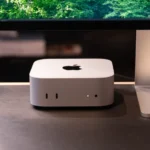Amazon is currently developing a high-tech pair of smart glasses aimed at making deliveries faster and more efficient for its drivers. These smart glasses, internally code-named “Amelia,” are designed to guide drivers through their routes with turn-by-turn navigation displayed directly on one of the lenses. This means drivers won’t need to rely on handheld GPS devices, freeing up their hands and potentially making their jobs safer and easier.

| Key Details | Description |
|---|---|
| Purpose of Glasses | To assist delivery drivers with navigation and improve delivery efficiency |
| Potential Features | Turn-by-turn navigation, hands-free GPS, photos as proof of delivery |
| Project Code Name | “Amelia” |
| Main Benefits | Reduced delivery time, increased driver efficiency, hands-free navigation |
| Development Challenges | Battery life, data gathering, driver adoption |
| Competition | Increased delivery competition from Walmart |
| Expected Release | Future Echo Frames with embedded screens could launch by mid-2026 |
Why is Amazon Making These Smart Glasses?
Amazon has a goal to make deliveries as fast and cost-effective as possible. The “last mile” of a package’s journey – getting it from a local warehouse to the customer’s door – is usually the most expensive and time-consuming part. In recent years, Amazon has taken big steps to manage its own delivery system by building suburban warehouses, starting its own airline, and hiring its own drivers. By developing these smart glasses, Amazon hopes to make the last 100 yards of delivery – or the final stretch to the door – faster and smoother, potentially reducing costs and improving delivery times.
Features of Amazon’s Delivery Glasses
The glasses are expected to display directions, giving drivers quick left or right prompts as they walk through buildings, hallways, or around any obstacles. Plus, the glasses could take photos of delivered packages, providing customers with visual proof that their order arrived.
These glasses are built on Amazon’s Echo Frames, the consumer smart glasses that allow people to use Alexa hands-free. With the delivery glasses, Amazon is taking the Echo Frames concept and adapting it to the delivery driver’s specific needs.
Challenges Amazon Faces
Developing high-tech glasses for delivery is not without its challenges. Amazon has to make the glasses comfortable enough for drivers to wear all day, with a battery that lasts through an entire shift. They also need precise mapping data on streets, sidewalks, and specific delivery points, which may take years to gather.
Getting drivers on board may also be a challenge. Some drivers might find the glasses uncomfortable or distracting, while others might already wear prescription glasses, making the delivery glasses more complicated to use. Amazon could face resistance from drivers unless the benefits clearly outweigh any potential discomfort.
Competition and Future Prospects
Amazon isn’t the only company pushing for faster, more efficient deliveries. Walmart, for example, has increased its online order delivery options, even offering special incentives to drivers during the busy holiday season. This competitive pressure adds to Amazon’s motivation to innovate with technology like delivery glasses, which could set it apart.
Amazon’s smart glasses project may be years away from becoming a reality, but if successful, it could reshape how deliveries are made. And as Amazon continues to evolve, these innovations show the company’s commitment to improving delivery services and staying ahead in the e-commerce race.
For more information on Amazon’s delivery technology innovations, check Amazon’s official website and Reuters’ tech news updates.








Add comment